The Third Street Arcade, Then and Now (Photos by Dan Arnold)
Read Part 1: Dayton Arcade: A Historical Timeline
Our last article left off in spring of 1991, when the Dayton Arcade finally closed after years of decline. (Two tenants did remain open: Arcade Seafoods with its own entrance on Ludlow Street and a jewelry store on 3rd Street.)
Ever since that day, there has been a strong movement to reopen the complex which has meant so much to Daytonians since it first opened in 1904.
These efforts over the years have varied widely in scope and feasibility. Despite times when it looked like the Arcade was doomed to demolition, redevelopment is currently underway after an inspired financing effort and creative reuse plans that are finally coming to fruition.
Early 1990s
Shortly after its closure, the Arcade would open back up for a seasonal shopping event called Holly Days in 1992. The hope was that if it was successful, the momentum would propel the Arcade to open back up permanently. But it didn’t work, as large crowds showed up in 1992 but did not return the following year when the event was repeated. At that point the city declined to continue to support Holly Days in future years. And the holiday decorations from 1993 would stay up in the rotunda until 2018.
The Dayton Arcade in 1992 (photos by Dan Arnold):

The owner of the Arcade at this time was Danis Properties, who bought it in 1990 with the backing of the city and oversaw its closure. During the rest of the 1990s, nothing much would be done as no major tenants or reuse proposals surfaced. In 2004, Danis sold the Arcade to Tony Staub of Brownfield Charities Inc. for $1.
The next few years saw some interesting Arcade headlines as its future began to look grim.
Jan 29, 2005 – Dayton Daily News: “Owner sees no future for Arcade: Complex on market, but little interest, he says; demolition considered”
“The owner of the … Arcade confirmed Friday he has put the five-building complex up for sale for $6 million and will apply for a permit to demolish it … Staub … said the building is draining his resources and he’s frustrated by the lack of financial support for its redevelopment.”
May 24, 2005 – Dayton Daily News: “Arcade owner calling for bingo: Game needed to pay off back taxes, he says”
“Brownfield Charities … has applied for an Ohio charitable bingo license. Tony Staub said Monday he hopes running a bingo operation will pay off the $120,952 in back taxes he owes on the Arcade and possibly cover the expense of some building renovations.”
May 27, 2005 – Dayton Daily News: “City orders work at Arcade to stop; Officials want plans presented to Landmark Commission”
“The city has ordered (Staub) to stop removing escalators on the first floor of the complex until he receives approval from the city’s Landmark Commission. The entire complex is governed by a web of regulations over its historic architecture and its use … Staub said Thursday he is having the first floor returned to its original condition. When it’s done, he wants to lease first-floor space. He does not know who the new tenants would be, Staub said.”
June 21, 2006 – Dayton Daily News: “You Can Bid on the Arcade On Ebay”
“You can find just about anything for sale on eBay, including Dayton’s historic downtown Arcade. Tony Staub, president of Brownfield Charities Inc, owner of the Arcade, on Tuesday confirmed he listed the 1902-era building for sale.”
A series of photos shows the condition of the Arcade in 2007, after it had been shuttered for 15 years:
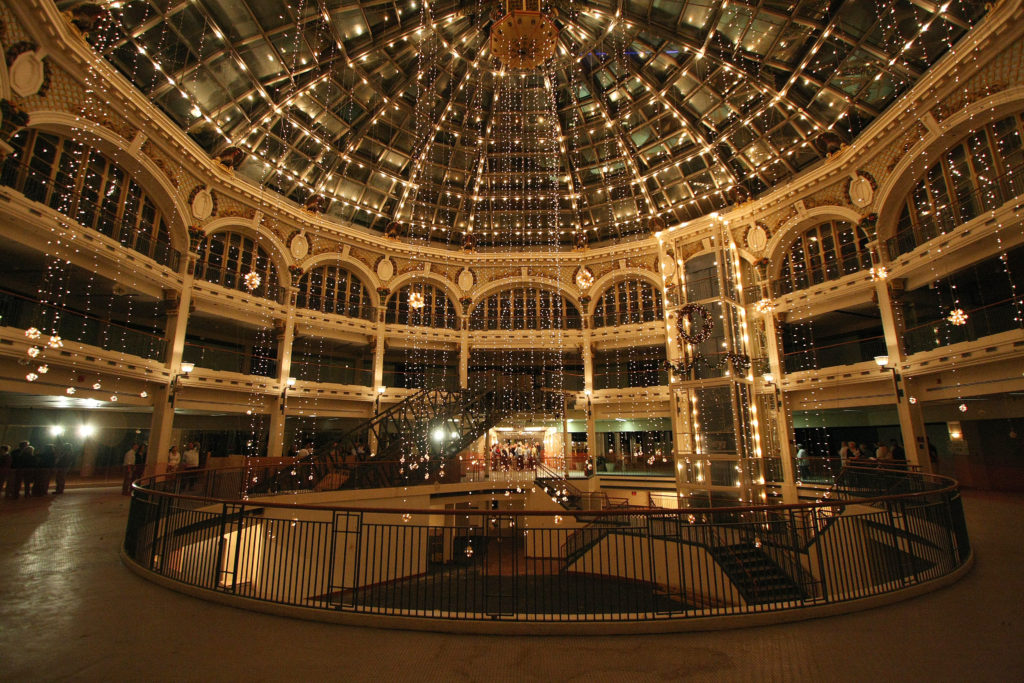
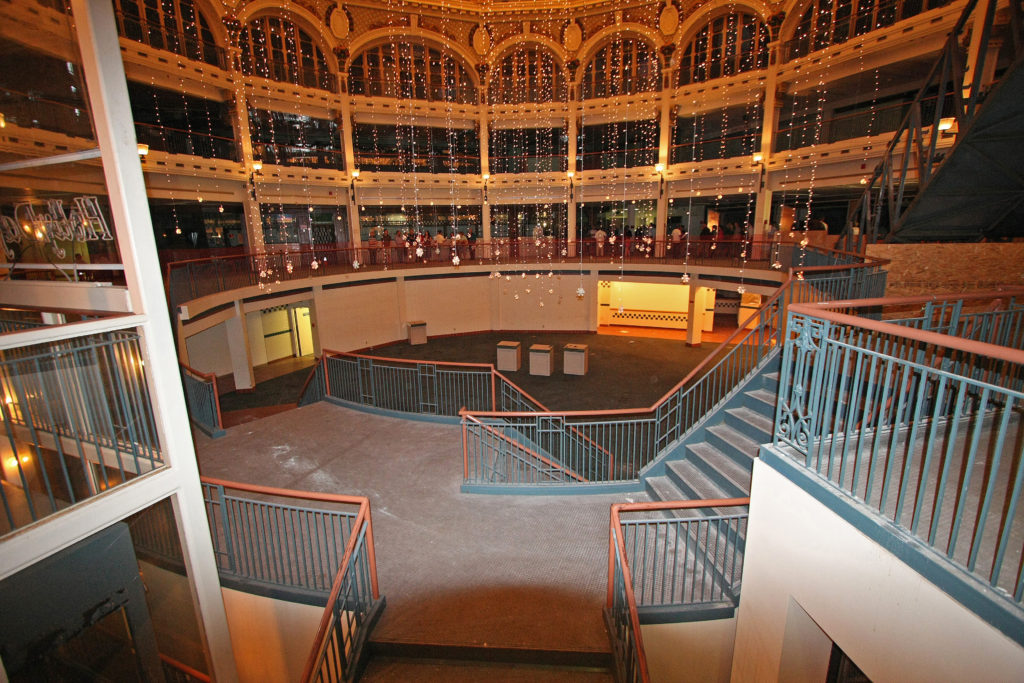
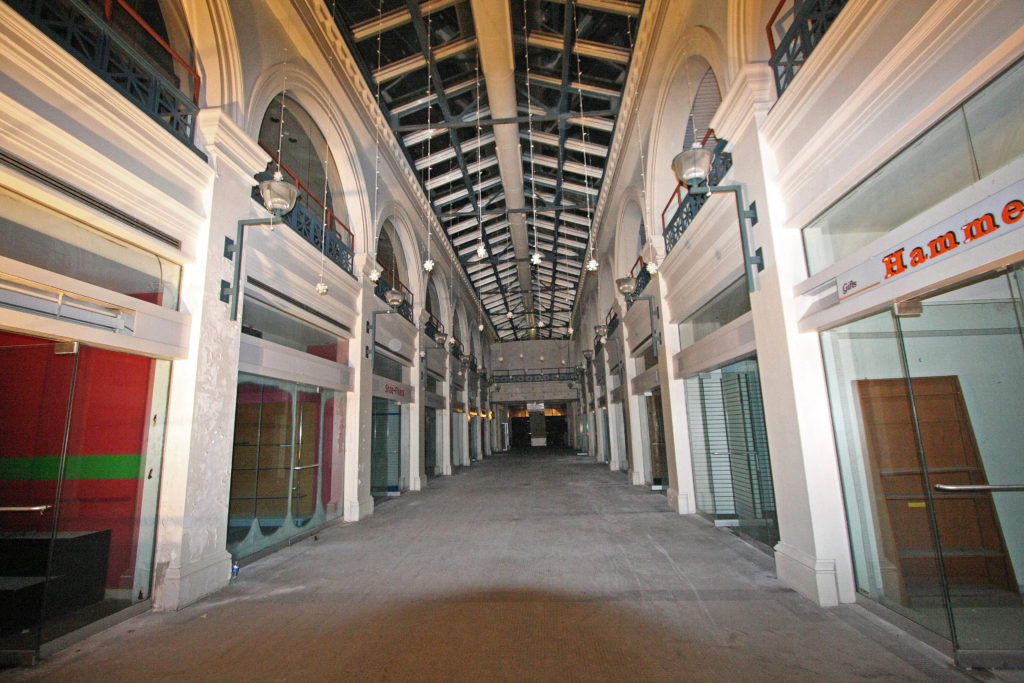
Photos by Dan Arnold
The eBay auction didn’t yield a sufficiently high bid for Staub and he was unable to work out a deal with an interested investor. In 2007, utilities in the complex were turned off due to non-payment of taxes.
July 27, 2007 – Dayton Daily News: “Group hopes to spare Arcade from demolition”
The Friends to Save the Arcade has until Nov. 19 to pay off a $318,600 tax lien.
The Arcade was later relisted on eBay, and in March 2009 the Arcade was bought by Wisconsin-based Gunther Berg and Wendell Strutz for $615,000. They pledged to restore the complex to its former glory, but it soon became evident that Berg and Strutz lacked tenants and financing and weren’t paying their taxes either, and the Arcade deteriorated swiftly under their ownership.
March 13, 2010 – Dayton Daily News: “Arcade $89K behind on property taxes”
“The partners missed payment of $36,638 in July 2009, a figure that has grown to $41,378 with added penalties and interest. An additional $47,722 was due in February.”
November 20, 2012 – Dayton Daily News “‘Nuisance’ Arcade costing taxpayers: Windows in 1 of 5 buildings pose danger because glazing is failing.”
“’I feel extremely bad about the windows, but I think someone is trying to take advantage of us,’ said Berg, referring to the city’s glazing estimate. ‘If the city contacts us and tells us we have to glaze the windows, we will do it, but not for $120,000.’ Records obtained by the Dayton Daily News show the city’s Department of Building Services sent Berg letters on May 5 and Aug. 31, regarding the windows.”
The Commercial Building was declared a public nuisance in 2012 and its windows were boarded up. Around this time there was a proposal floated by Berg and endorsed by the Dayton City Paper to relocate the downtown Dayton Metro Library to the Arcade. Berg requested a meeting to deliver a presentation to the library board, but the library quickly issued a press release outlining reasons why they could not move and would not be a good fit for the Arcade.
In 2015, with the Arcade floundering and continuing to deteriorate, Mayor Nan Whaley appointed an Arcade Task Force to study its condition and make recommendations. Officials would later confirm that they expected at least partial demolition to be the recommended action, but to their surprise, the consultants came back with a different finding.
June 1, 2015 – Dayton Business Journal “The Arcade isn’t too far gone, report says”
“There’s still hope for redevelopment of downtown Dayton’s historic and much-loved Arcade complex, according to a feasibility study commissioned by the mayor. Sandvick Architects … studied the buildings, with the help of Jera Construction Inc. in Cleveland. The team recommended a residential-focused redevelopment plan that would rely on major private development partners, with the first priority being stabilizing the buildings to prevent further decay … The development plan hinges on a key finding that the building is structurally sound and worth redeveloping.”
The city also hired a firm to study the feasibility of demolishing the Arcade, which was found to cost somewhere between $8 million and $12 million, raising the stakes of the redevelopment puzzle. In accordance with the report’s suggestion, the city tapped Miller-Valentine for a $700,000 contract for stabilization work later in 2015.
In January 2016, the city signed a memorandum of understanding with Miller-Valentine and Cross Street Partners to begin the process of a major redevelopment project.
The project was first reported to cost $72 million, but due to the Arcade’s condition that was more of an educated guess. In March 2017, it was announced that the city would spend up to $1 million for “architectural, engineering, and demolition services” which would help determine a true cost of development. This work predictably discovered that the project will cost much more than initially anticipated, now estimated at “over $95 million.”
On April 4, 2017, it was announced that the University of Dayton would become an anchor tenant in the redeveloped Arcade as part of a collaboration with The Entrepreneurs Center called the Arcade Innovation Hub.
Later that month, it was reported that the developers had secured “north of $50 million” for the project. That same month the principal of Cross Street Partners said that they were “very close” to securing the final pieces of financing to move the project forward, including “more than $21 million in low-income housing tax credits, $9.7 million in federal historic tax credits, $2.5 million in federal funds pledged by the city (and) more than $16.5 million committed in loans from PNC bank.”
Then in June 2017, the Arcade won $5 million in state historic preservation tax credits. At that time, one source called that award “the last major piece of the funding puzzle,” but despite the state coming to the Arcade itself to award the credits, there were no announcements from the developers that the project was a go.
In December 2017, another major win came when the Arcade won an additional $4 million in state historic tax credits for the second phase of the project. Dave Williams, a vice president at Miller-Valentine, optimistically said that “we can definitely see the finish line.” But predictions that the future of the Arcade would be announced before the end of the year were not fulfilled.
Then came a bizarre episode in March 2018 when Miller-Valentine announced it was pulling out of the housing portion of the Arcade as it was “unable to move forward,” but also that it was returning the awarded tax credits back to the state. It was quickly confirmed by multiple sources that tax credits remain with a project even if the development team changes, and soon McCormack Baron Salazar and Model Group stepped in to join Cross Street Partners.
In late May 2018, the city agreed to loan the project $10 million, and at that time the development team was hoping to close on the financing in August.
In June 2018, an executive with McCormack Baron Salazar recently said that “I don’t really see any obstacles” to the project moving forward.
In September 2018, the Arcade was awarded $22.5 million in Low Income Housing Tax Credits and a $4 million low-interest housing development loan. This was again called the last major milestone in the financing process and developers said all that remained was closing financing and working out the legal side, which would happen by mid-late November 2018 and construction would begin “by the end of the year.”
In December 2018, the financial closing and tenant agreements were said to be “imminent.”
But there would still a few more months to wait until the financial closing for the $95 million project was finally completed on April 25, 2019. The city celebrated, and construction began soon after.
Although plenty of hard work remains before the Arcade can open, and despite all of the delays and setbacks along the way, this is an incredible achievement for the development partners and city.
A catalytic project for downtown on par with the Schuster Center and Fifth Third Field, but unprecedented in its adaptive reuse of vacant landmark structures and creativity in financing, the Arcade should turn heads not only in the Miami Valley, but across the country.
We close with a few more shots of the Arcade, including some of its flourishes and details, in 2018-19 just months before construction:
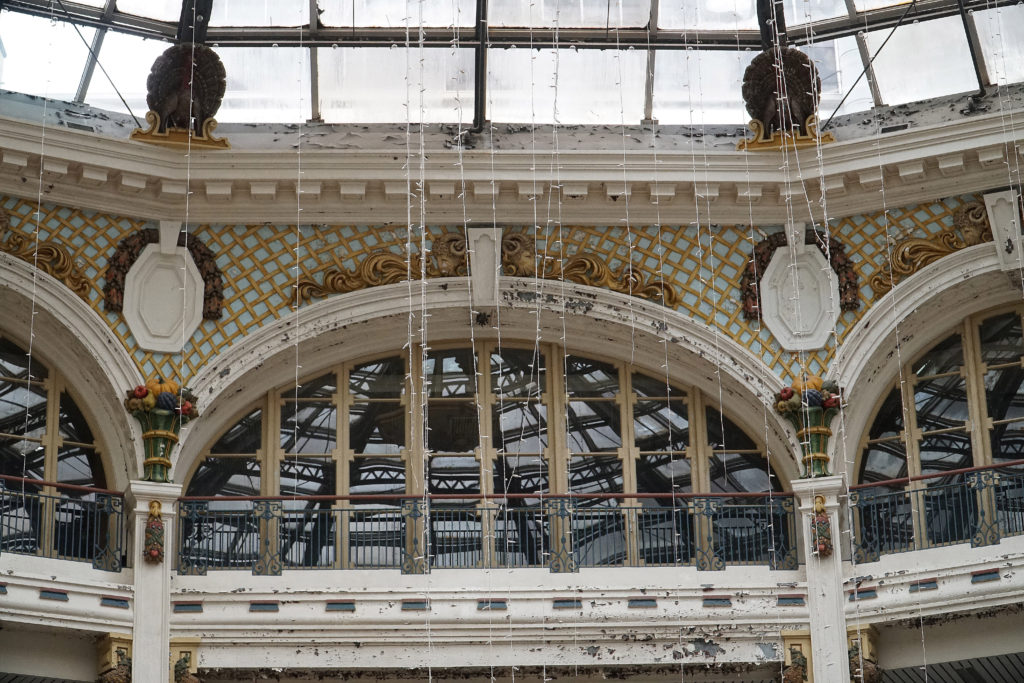
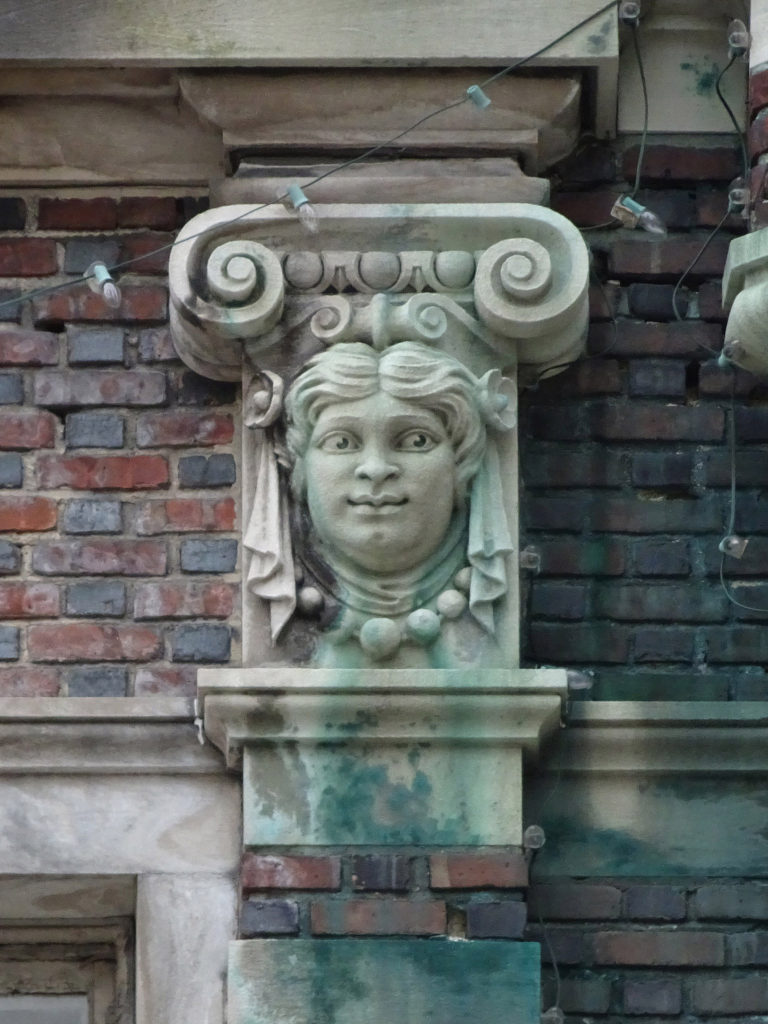
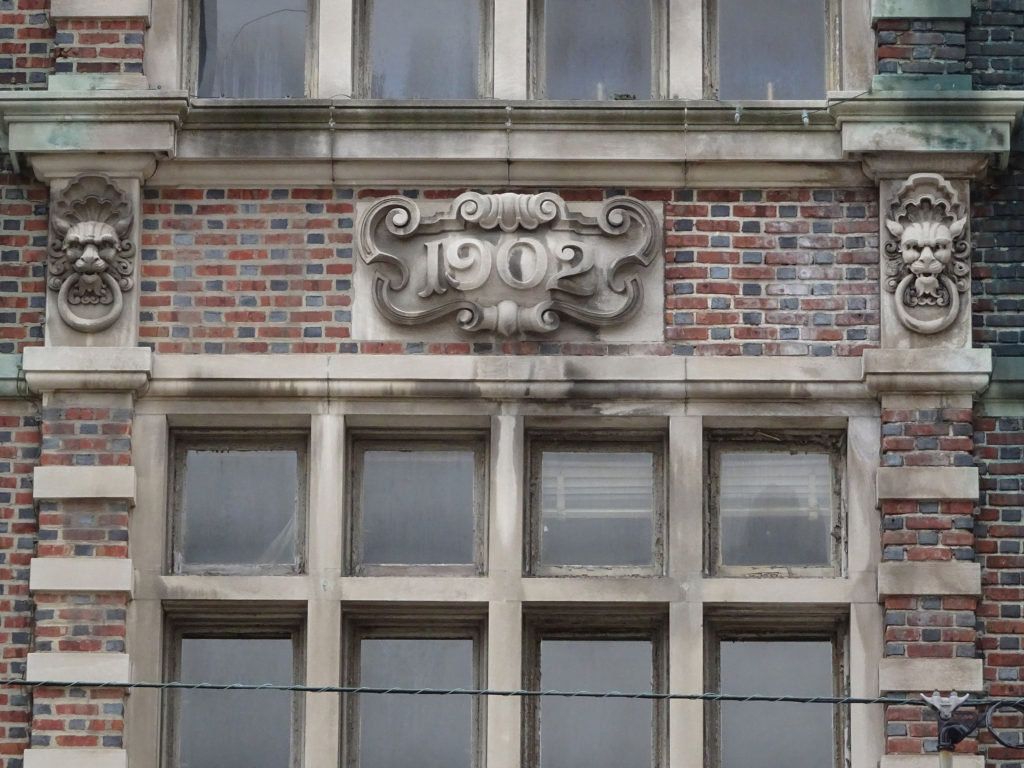
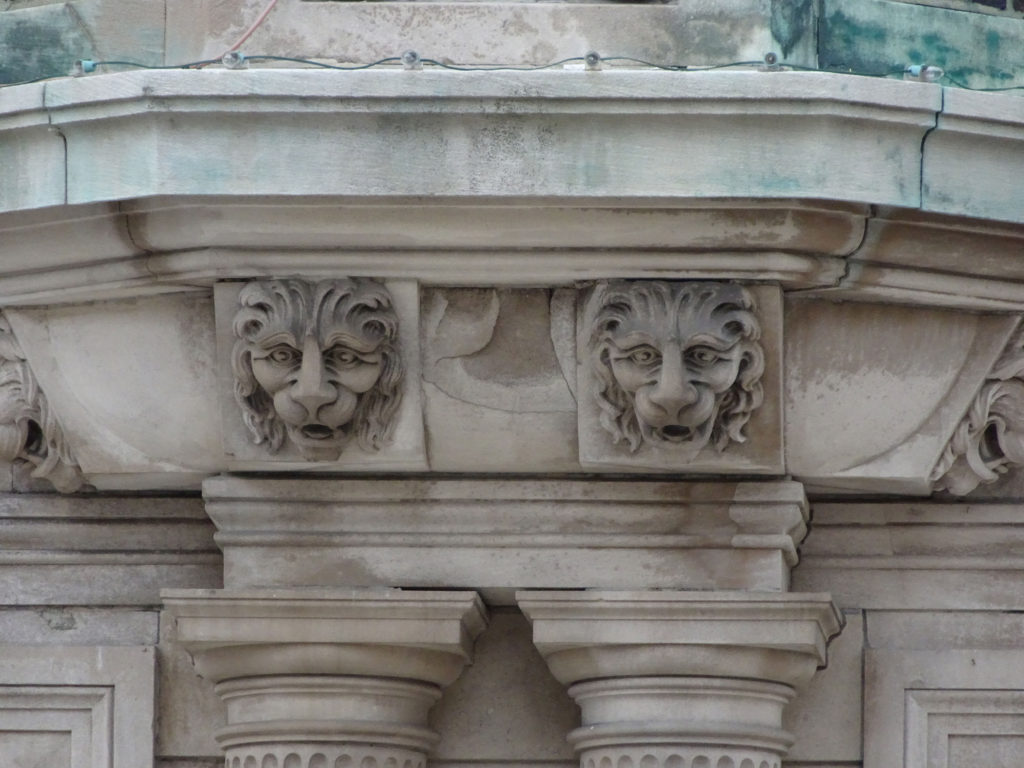
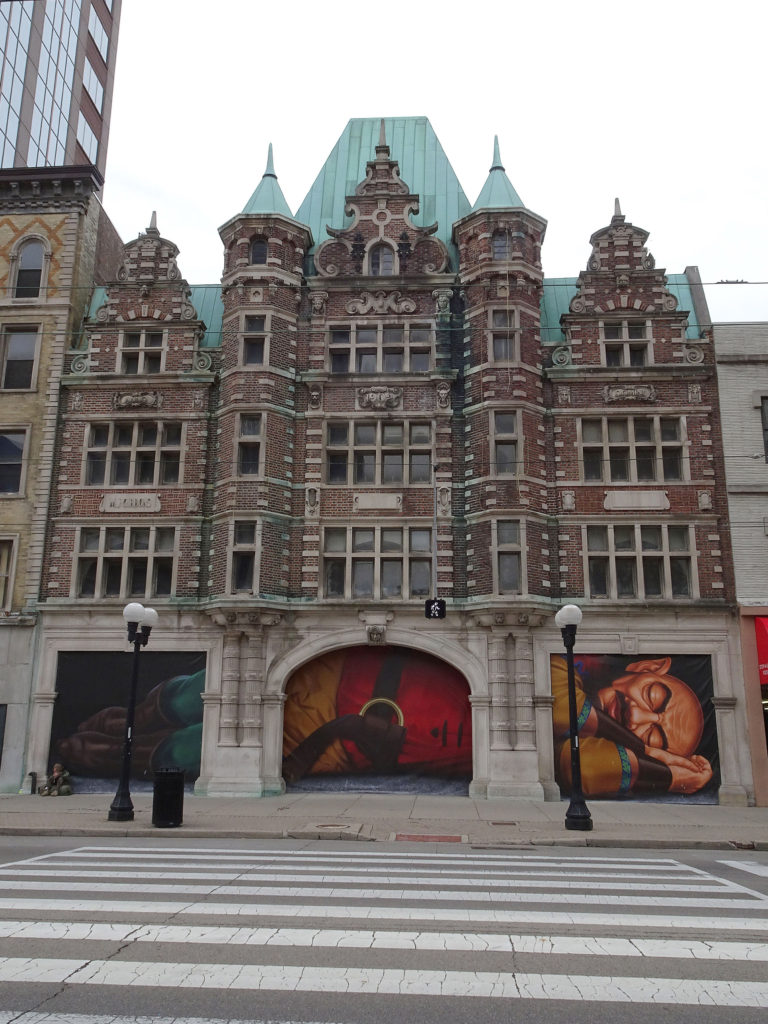
Photos by Dan Arnold
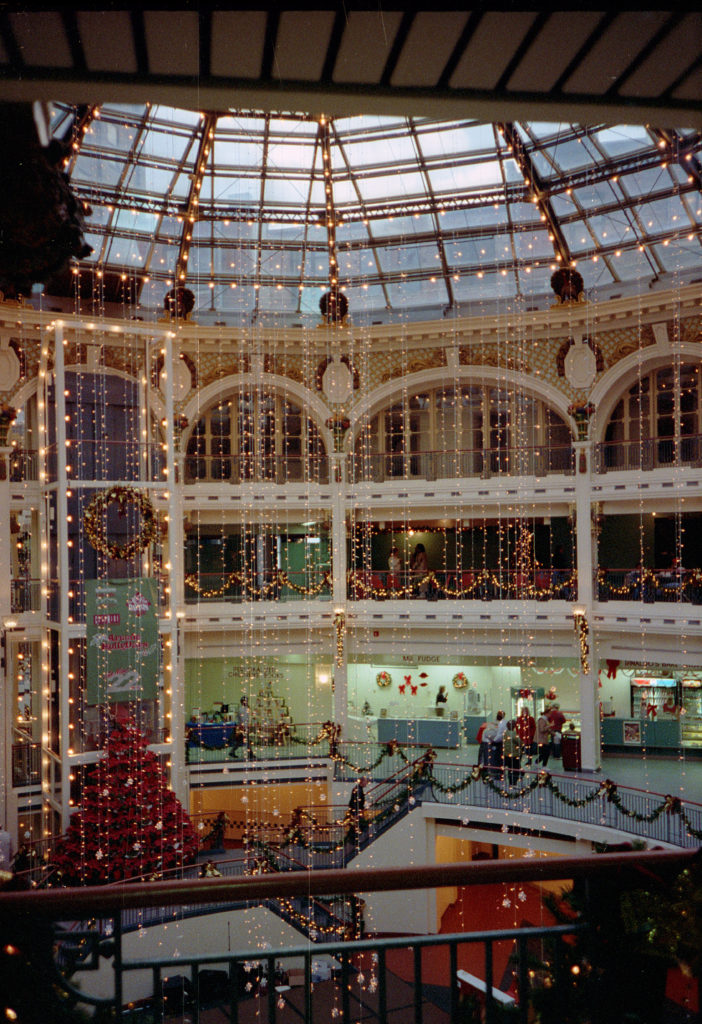
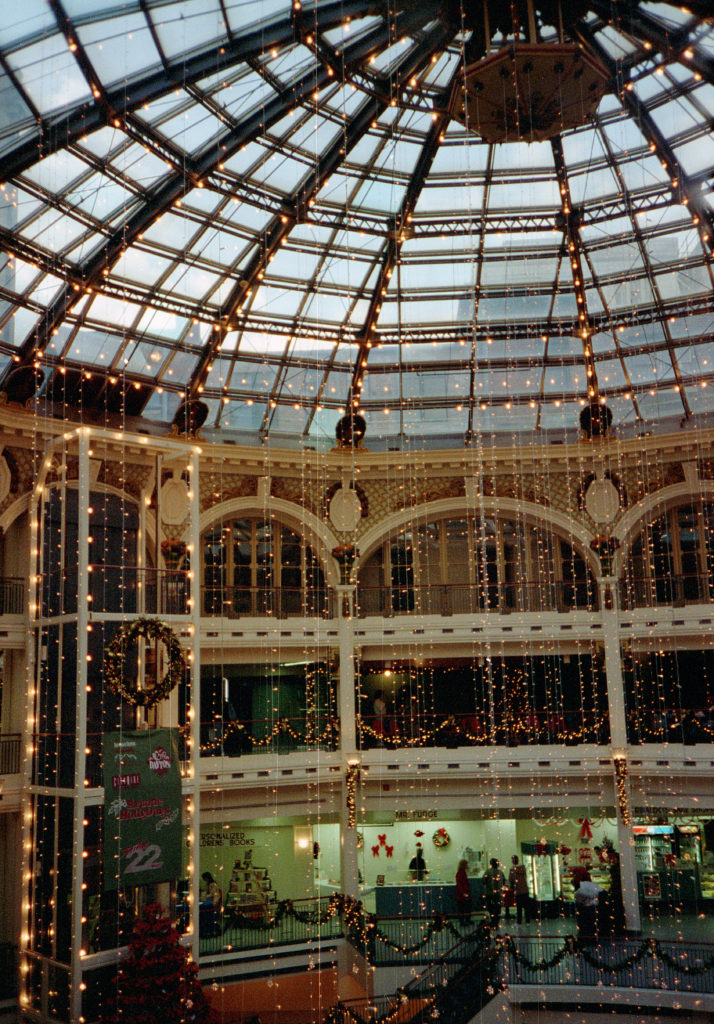
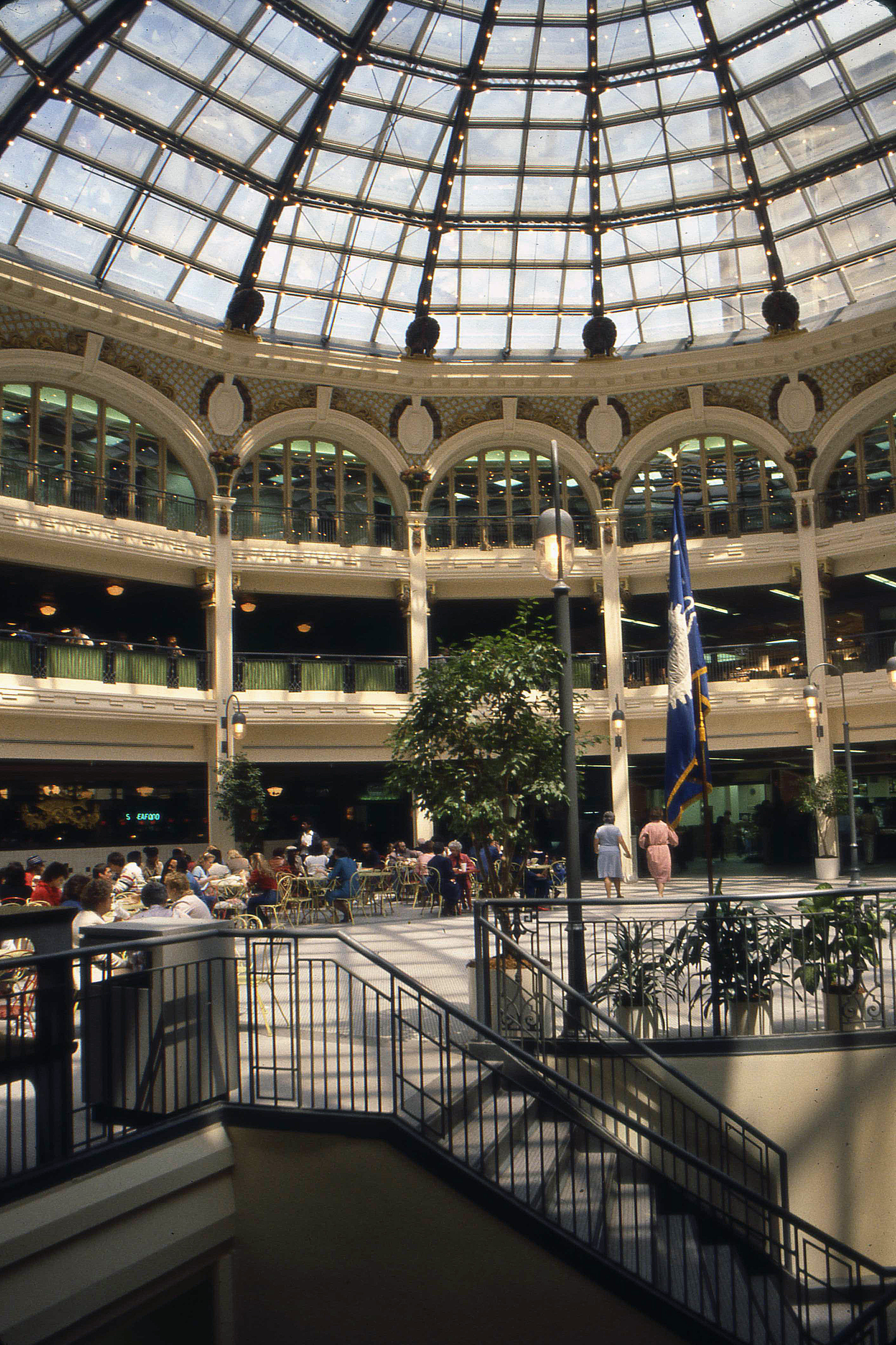
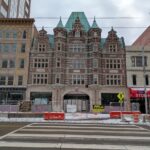

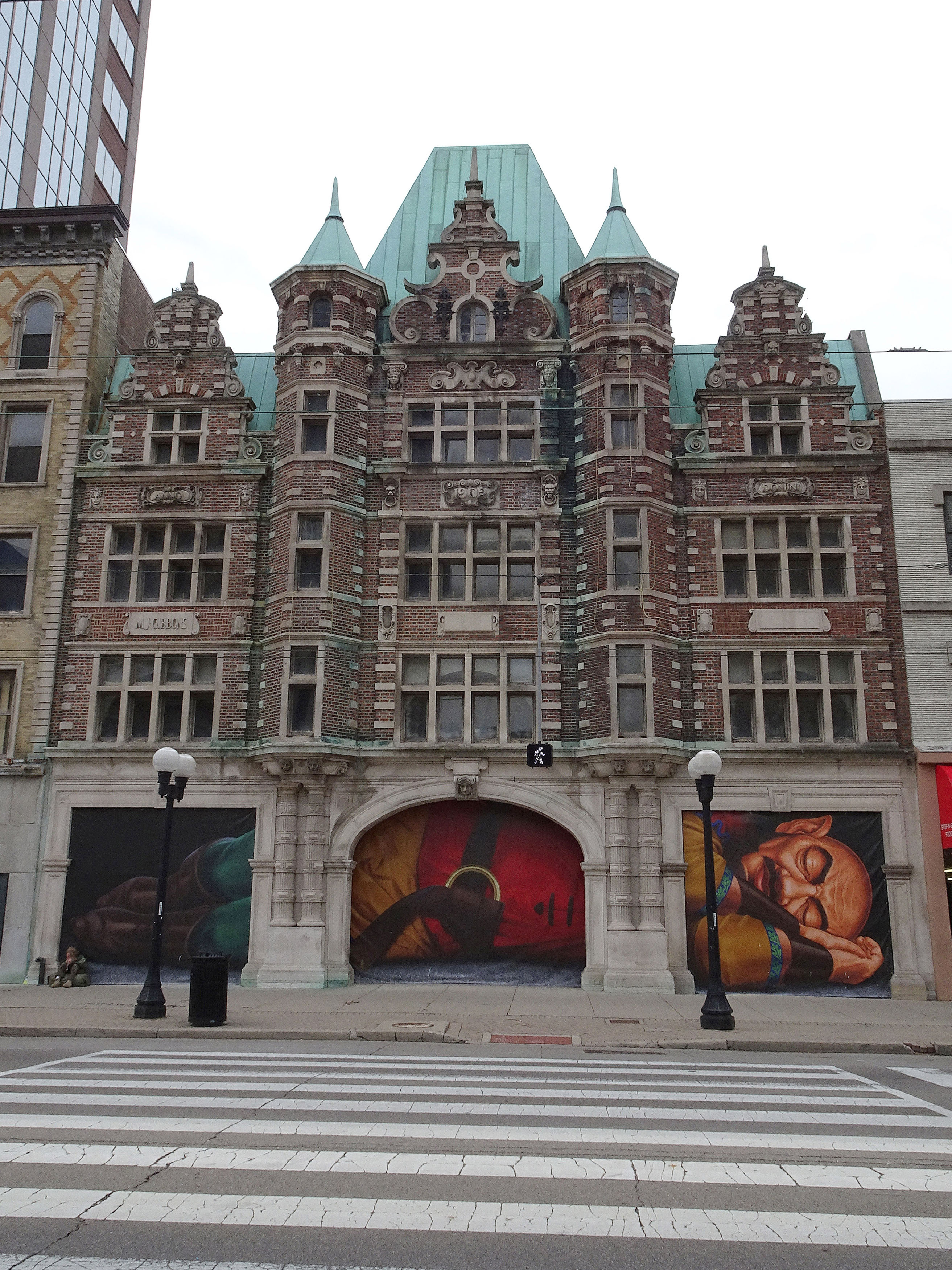
Great articles & pictures. Thank you, Andrew, for putting them together.
You’re very welcome!